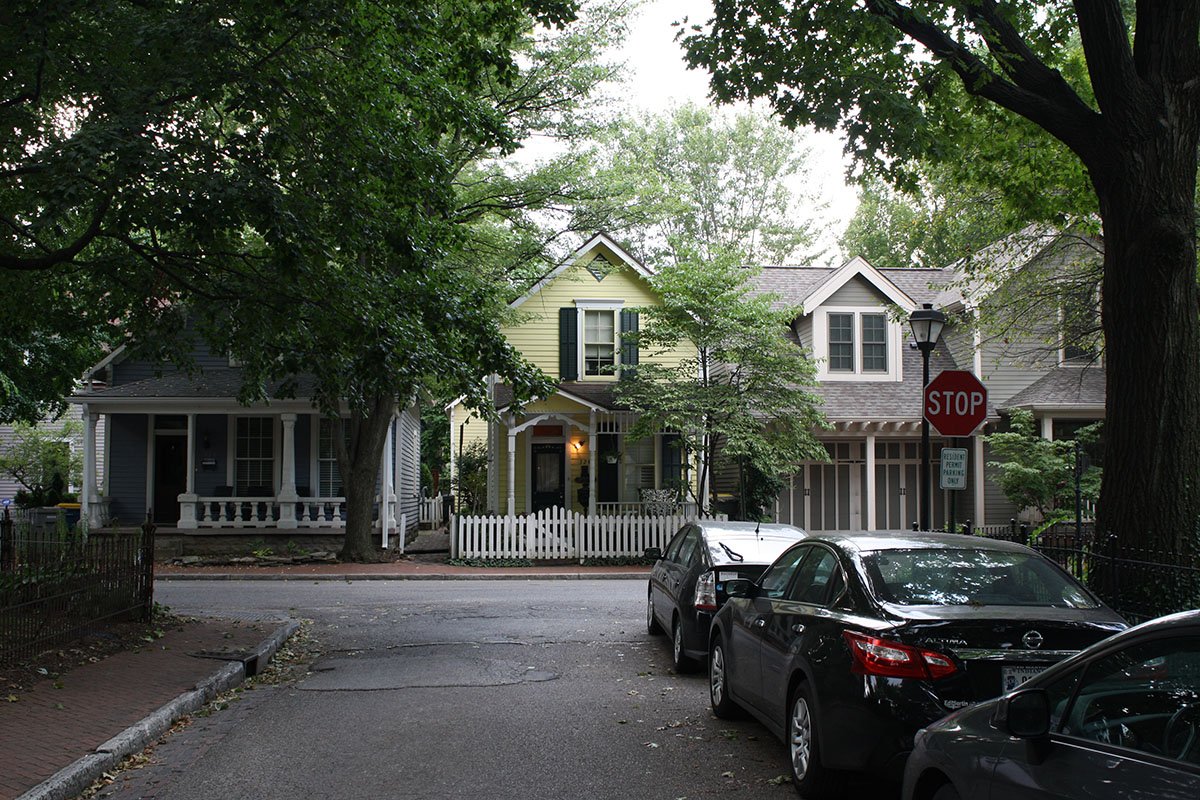7. Historic Neighborhoods Attract People
James Glass
Column that appeared in the Indianapolis Star onThe summer in Indianapolis is full of home tours, and many of them feature historic neighborhoods in the center of the city. This is a good time to ask, why do people live in them and how does the experience of living in them compare to living in new housing developments? One common comment from those who have resided in historic areas is that there is a strong sense of community in such neighborhoods. David Certo is president of Historic Urban Neighborhoods, Inc. (HUNI), an association of neighborhoods organizations representing 20 historic areas in the city. He says that residents in such areas tend to watch out for their neighbors. They tend to be concerned about each other and form neighborhood associations that bring people together to face common challenges and to sponsor social activities. Jonathan Chumley, a resident of the Herron-Morton Place historic district north of downtown, agrees and says that in his neighborhood, people of all different economic incomes, ages, occupations, ethnic backgrounds, and lifestyles find common interests and work together to improve the quality of life for everyone. He says that he has found a greater sense of community in the two historic neighborhoods that he has lived in than in a new downtown condominium development where he once resided.
People also are attracted to historic neighborhoods because of the unique character of the old houses and the sense of history. Jeff Miller, contact person for the Fletcher Place Neighborhood Association, says that he and wife liked the square footage, the decorative details, and the 140-year history of the neighborhood when they purchased their 1873 house. Miller and Paul Smith, former president of the Old Northside, Inc. neighborhood organization, also speak of the sweat equity that they put into their houses in the 1970s and early 1980s to restore them. Such “pioneers” bought old houses because they could be purchased cheaply and the renovators could buy much more house than with a new structure in the suburbs. Since then, the value of the early restored houses has risen by many times the original investment, as empty nesters, single downtown workers, and others have discovered the delights of living in old houses, in a close-knit community, close to downtown work places.
Eleven downtown neighborhoods are also designated historic areas under the protection of the Indianapolis Historic Preservation Commission. The commission and its staff must approve exterior alterations to existing buildings, plans for new houses and additions, and zoning changes. Is this a positive or a negative for people in the historic areas? Pete Howard, president of the Lockerbie Square People’s Club, says the restrictions are intended to preserve the unique historic character of his neighborhood, and most residents see them as positive. Paul Smith says that the reviews of design changes give property owners the assurance that their investments will be protected against incompatible new houses, additions, or alterations made by neighbors. That assurance has actually caused property values in the designated historic areas to go up at a faster rate than in older neighborhoods not under the preservation commission’s protection. For example, in a 1997 study conducted for Historic Landmarks Foundation of Indiana, nationally known real estate economist Donovan Rypkema found that property values in Fletcher Place had risen approximately 117% over a 13-year period, while values in a nearby older neighborhood had increased by only 51%.
One of the intriguing attractions of several of the historic areas is the degree to which residents have improved the amenities of daily life. In the Old Northside, the Old Northside Foundation has raised the funds needed to create two community parks and maintain them. The foundation also worked to establish a soccer field for neighborhood children in a vacant field owned by the State of Indiana. In Herron-Morton Place, the neighborhood association has also sponsored a community park. The Lockerbie Square People’s Club and the Old Northside, Inc. publish newsletters for residents about upcoming social events and issues of concern for property owners and tenants. Fletcher Place recently celebrated its 150 anniversary with a symposium and reception. Woodruff Place holds an annual flea market, and nearly all the historic areas hold special events for residents and outside visitors.
Mark Dollase, director of the Central Indiana Office of Historic Landmarks, says that the member organizations in HUNI offer broad social and economic opportunities for all their residents. Affordable housing is found along with large homes for the wealthy in most of the areas, and there are residents with diverse racial and ethnic backgrounds. Ransom Place, located between Dr. Martin Luther King, Jr. Street and Indiana Avenue south of 10th Street, has long been associated with the history of the African American community. African Americans also live in most of the other historic areas downtown. Fletcher Place has a significant number of Hispanic Americans.
Certo, Chumley, Miller, Smith, and Howard all agree that living in historic neighborhoods is not for everyone. Some people enjoy living in a suburban environment or a downtown development that is totally new. And there are some challenges residing in a downtown historic area: unexpected repairs needed in old houses, greater traffic noise, fewer retail options, applying for design permits if the owner does not like dealing with regulations, etc. But the pluses outweigh any negatives for those who live there: a strong sense of community, aesthetically pleasing environment, continuity with people who have lived in a neighborhood for many generations, diverse types of people, and appreciating property values.

Lockerbie Square, 2017. James Glass
